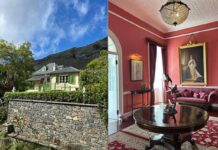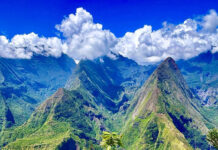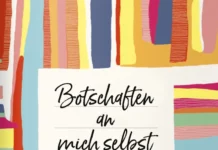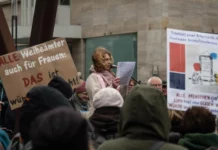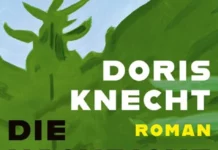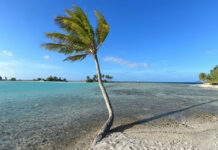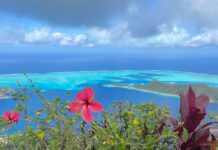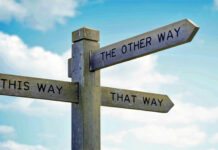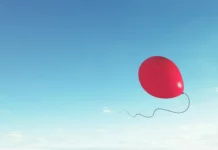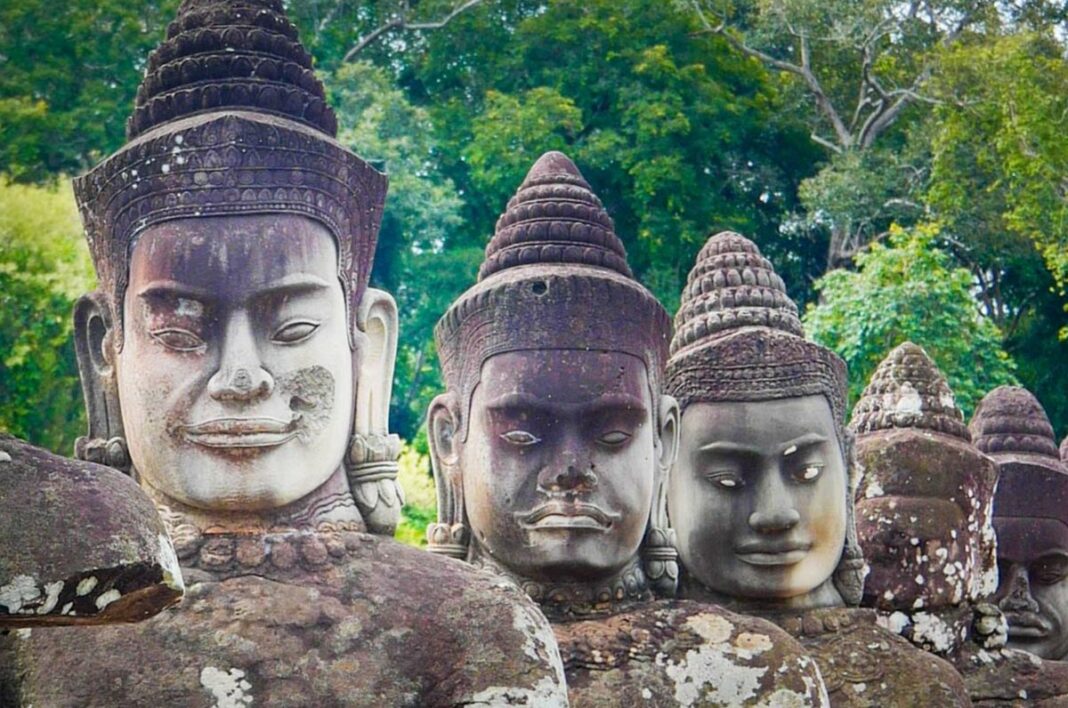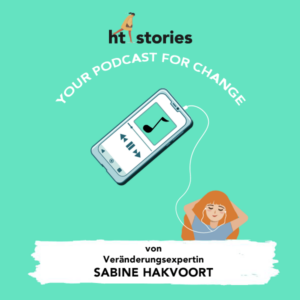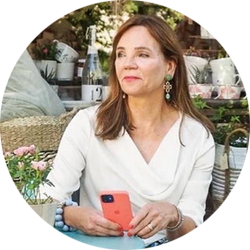Dear readers,
this is the 32nd article about our boat trip around the world since September 2022.
I am very grateful for your continuity and the interest that you take in it. It means a lot it me and I feel supported by it.
With love from Koh Samui
Sabine
Hanoi
It was probably practical. This is why the French grouped the three countries together under the term ‘Indochina’ when they colonized Vietnam, Laos and Cambodia. This is where the vague knowledge of history sets in and the first dealing with the history of Vietnam makes it clear how little I know about this country.
Hanoi always appeared to me as a fairytale city, somewhere in the north of an unknown country whose history I mainly associate with the Vietnam War. The colonial past hovers above it, supported by romantic films and legendary names like Saigon and Hoi An. I am, so to speak, stuck somewhere between 1870 and the 1960s. What I find is a lively city that is popular with tourists, endearing and authentic.
Here, for the first time, I am actually afraid of being run over by scooters, but I adopt the energetic gesture and courageous lane-crossing method of our friendly guide Duc. This enables us to survive in the old town, where there are still streets separated by trade. Here we find the street of door fitting manufacturers, bird cage makers and silk scarf sellers. I also happen to find the street of art and galleries, which is certainly located in a very central area for pragmatic reasons.
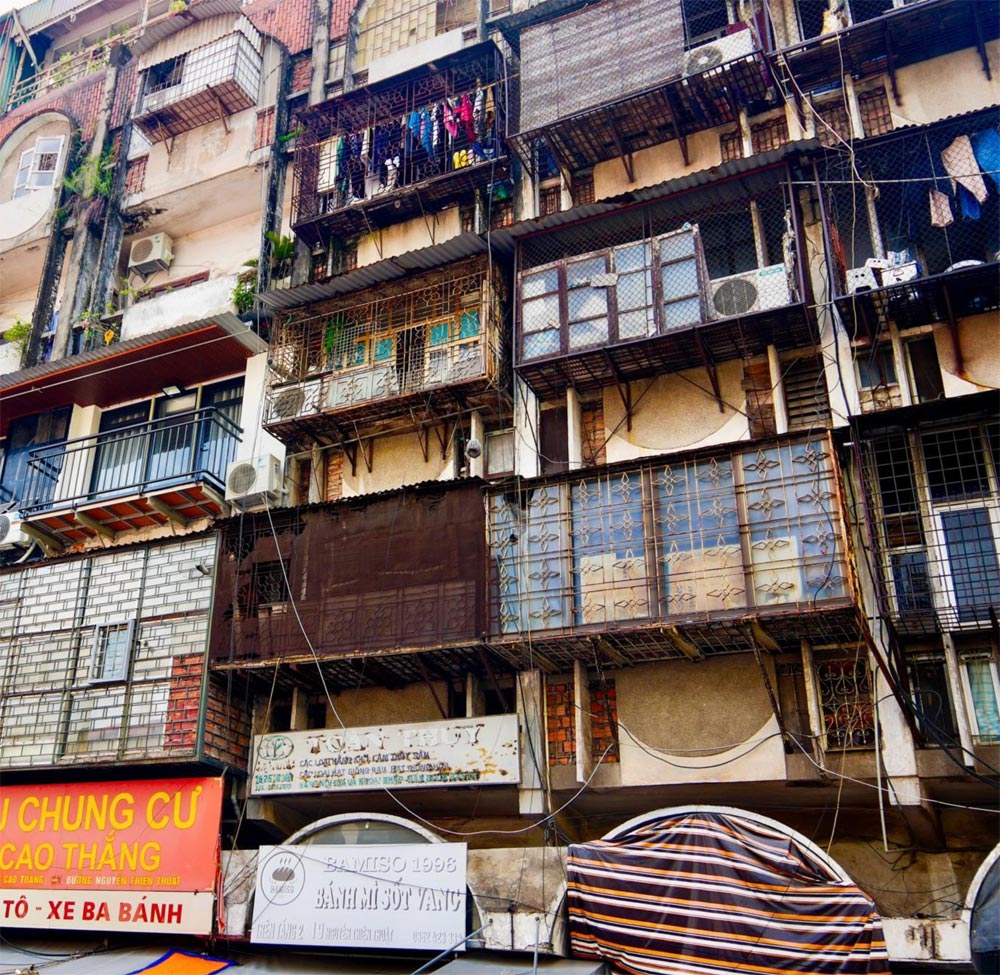
There hangs a photo of our current chancellor, Mr. Scholz, who recently visited the gallery. The proud owner of the gallery assures me that the sophisticated and expressive art has been gladly purchased by German customers ever since. Despite the rainy season, there is a lot going on in the city. At the weekend, the central lake with its illuminated temple and the pretty red bridge is surrounded by Asians who like to celebrate their free time with loud music.
You find fantastic coffee on every corner. I have rarely drunk such good coffee. Full-bodied, velvety, and tasting a little like chocolate, it drives me out onto the street in the morning. ‘Egg coffee’ is another specialty in which egg yolk whipped with sugar replaces the frothed milk of Italian cappuccino. It tastes marvellous. In fact, delicious is no exaggeration when it comes to food.
On our street food tour, we enjoy wonderful sandwiches, which are called Ban Mie something or other here. Pancakes, steamed or fried, are another specialty alongside stuffed rice noodle rolls. Beef in fragrant sauces with tender jasmine rice and very tasty desserts, rich in sauce and served with small, colourful jelly balls, round off the menu. The ‘food tour’ comprises six stations and is great fun. There is not much more, although there are so many other dishes to discover. The French colonial heritage can also be found in the form of numerous French restaurants. We dine excellently in one of them. Western cuisine with a touch of Vietnamese, that´s a fantastic combination.
Temple of literature, Hanoi

But Hanoi also has a lot to offer culturally. The Temple of Literature, which was not a temple but an imperial academy, is reason alone to travel to Hanoi. Founded in 1007 for aristocrats, the educational centre was used for over 1000 years for university studies based on the principles of Confucius.
There was a high demand for knowledge and wisdom. In one of the inner courtyards are 34 stone steles with turtle decorations. The name, place of birth and the result of the doctoral examination of the 1307 graduates of the imperial examinations during the Lê and Mạc dynasties from 1442 to 1779 have been chiselled into the stone. The turtles symbolise strength and wisdom, and the graduates were probably just that. Years of study and the successful passing of difficult examinations characterised them as particularly gifted. The architectural complex is also a jewel and is a UNESCO World Heritage Site.
The presidential palace is in the French quarter. The wide streets are lined with colonial buildings that are now government buildings. The Ho Chi Min Monument tells the story of the man who finally led the country to independence in 1957 after the difficult battles between the Vietnamese and France, who were striving for independence. From 1945 until his death in 1969, Ho Chi Min was chairman of the country’s communist party and its president. It is worth taking a look at his interesting life https://en.wikipedia.org/wiki/Ho_Chi_Minh. The people of Vietnam have set up an opulent monument for him that people can file past.
A trip into the surrounding countryside gives an idea of how the rural population lives in very modest circumstances. Chickens and lotus flowers are the main sources of income here.
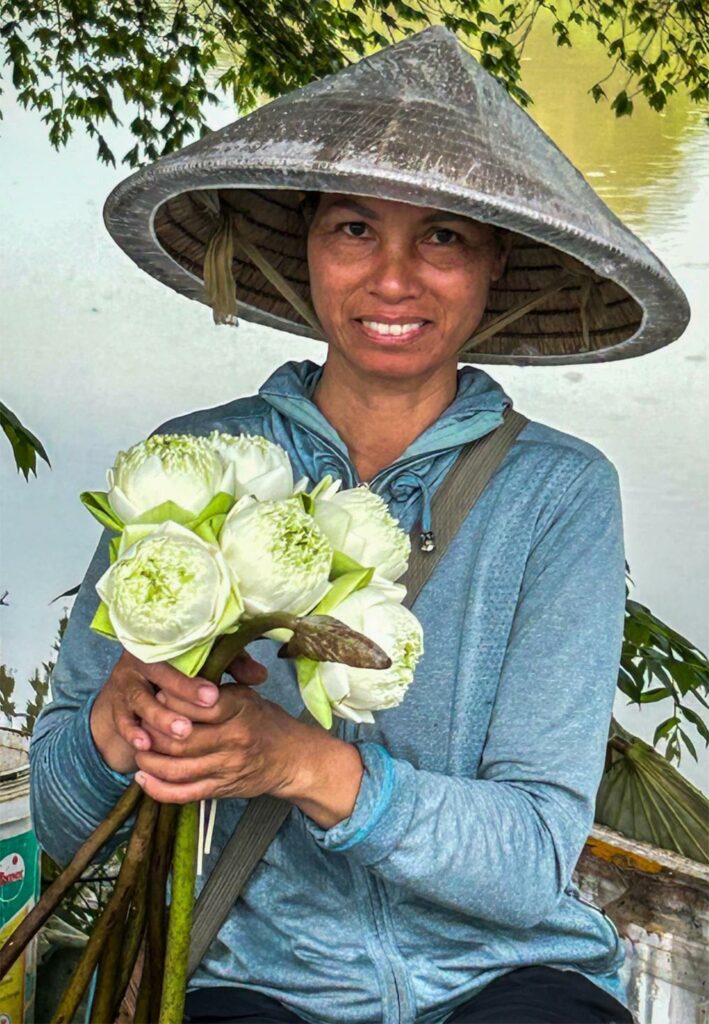
Laos
From Hanoi we fly to Luang Prabang in Laos. The short flight catapults us into a fairytale town nestled between green mountains on the banks of the muddy-brown Mekong River. The former royal city is small but has over 200 temples to offer. Over 3000 monks still live in the town today and are supplied with rice on their morning alms rounds along the main street. Tourists are also allowed to take part in this ritual, which I don’t miss out on.

Some temples, such as Wat Xieng Thong, are very well preserved and impress with their golden decorations, large Buddha statues and symbols of the Buddhist faith. Laos, which has always served as a kind of transit camp between Thailand and Burma, was long a kingdom founded by the Khmer as a vassal state in the 14th century. For a long time, it had to assert itself in the struggle for supremacy in the region.
When the capital was moved to Vientiane, which is still the capital today, in the 16th century, Luang Prabang sank into insignificance. Even under French colonial rule, Laos was always a pawn in the interests of other nations. During the Vietnam War, more bombs were dropped on Laos than on any other country in the world. The Americans tried to stop the Vietnamese communist Vietcong from transporting supply along the Ho Chi Min Trail across Laos. Luang Prabang was spared, as was the royal palace, from which the king was transported to a communist re-education camp in 1975, from which he never left alive. The palace, with its rather modest furnishings, can still be visited today.

‘The Chinese’ have built a modern high-speed train from Luang Prabang to the capital. It is connected to the Chinese railway network and ensures that the constant stream of Chinese tourists never stops. But we use the road, driving through knee-deep potholes, battling with countless 40-tonne Chinese trucks that behave like the kings of the highway.
Pakse
In the centre of the country, just before Savannakhet, they turn off to cross the Mekong into Thailand via the Thai-Laos Friendship Bridge. Dogs, cattle, goats, children, overloaded tuck-tucks – everything is bustling along this main artery, which we drive along for over 1000 kilometers. Past romantic rice fields, through beautiful karst mountains, until we arrive back at the Mekong. We spend the night in a motel and have dinner in a Chinese restaurant with a rather obscure clientele. The next day we continue to Pakse, where we want to visit the Wat Pou temple. A Khmer complex, which they left sometime in the 11th century to build an even larger temple complex in Angkor Wat.
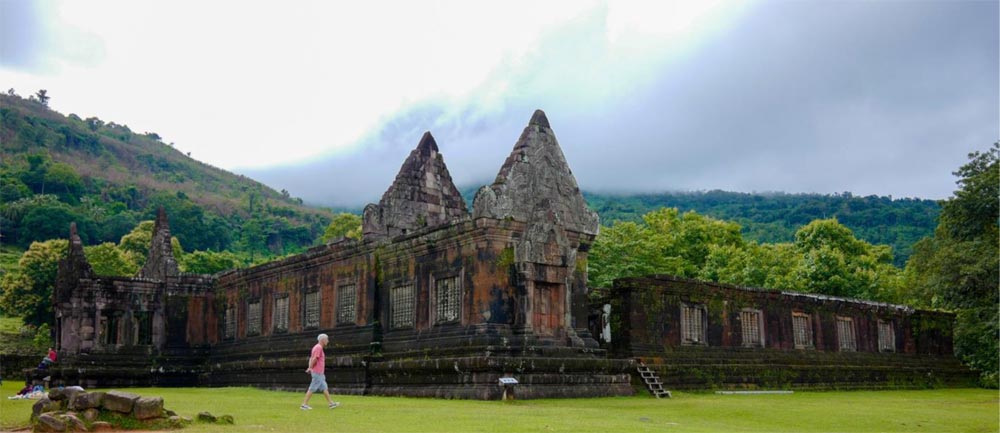
Khmer culture, landmines and Buddhism in Cambodia
Bong means brother in Khmer, the language of the Cambodians. This is how people like to address you in this friendly country. As a linguist I am always interested in language and learn that there has only been written evidence of the language since the 6th century AD. It comes from the Austro-Asian language family and contains elements of Sanskrit and Pali. The latter is the language of Buddhism. I wouldn’t want to have to learn it because the grammatical rules and symbols are complicated.

In the excavations of the temples of Angkor Wat and Angkor Tom you can find a number of inscriptions. It is nothing short of a miracle that you can walk around these impressive temples as you please. Nothing is cordoned off or fenced off. Visitors can touch the beautiful stone reliefs. Some of them are already shiny. You can discover this magic place by climbing steep steps over knee-high thresholds, onto surrounding terraces and through atriums, through long corridors, past the carved main Hindu gods, Shiva, the destroyer and rebuilder of the world, Brahma, the creator of the world and Vishnu, the preserver. The three together form the trinity of divinity.
In addition, hundreds of other deities are worshipped, all of whom, according to Hindu belief, carry a special divine gift. It is easy to lose track of them all, similar to the saints and martyrs worshipped by Christians. In addition, the Buddhists took over in the 16th century and had many symbols removed. A kind of religious “makeover” took place. Evidence of this can also be found in the even older Angkor Tom. It would go too far to go into the art historical details here. For those interested, there is more on the Unesco World Heritage website https://whc.unesco.org
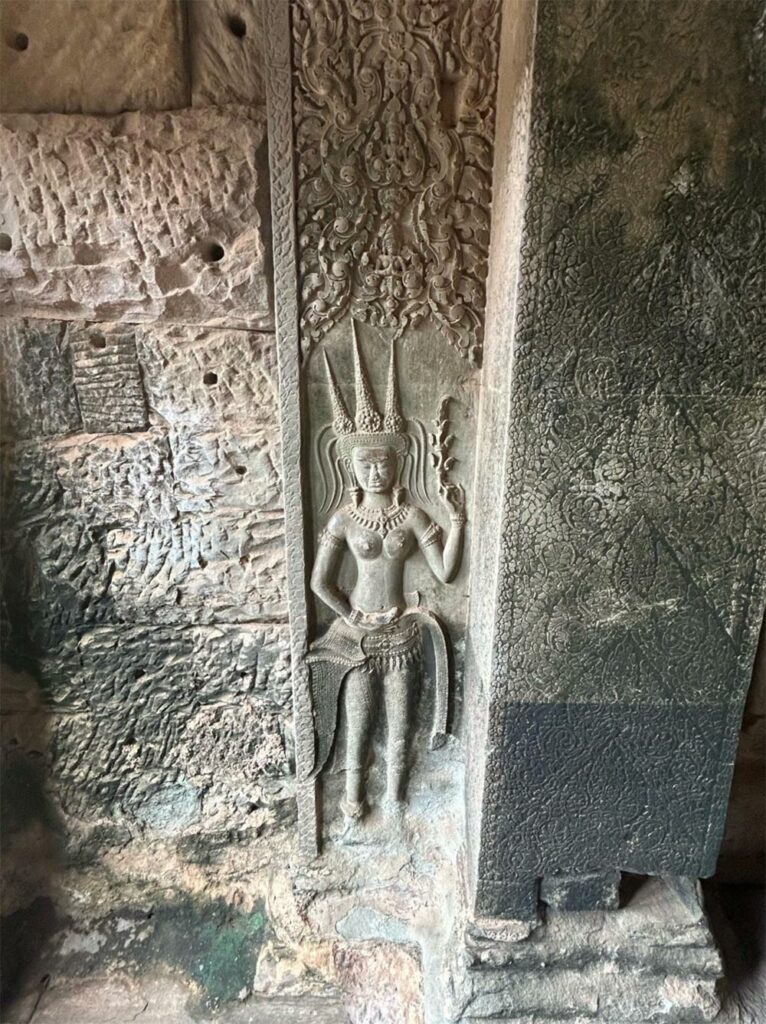
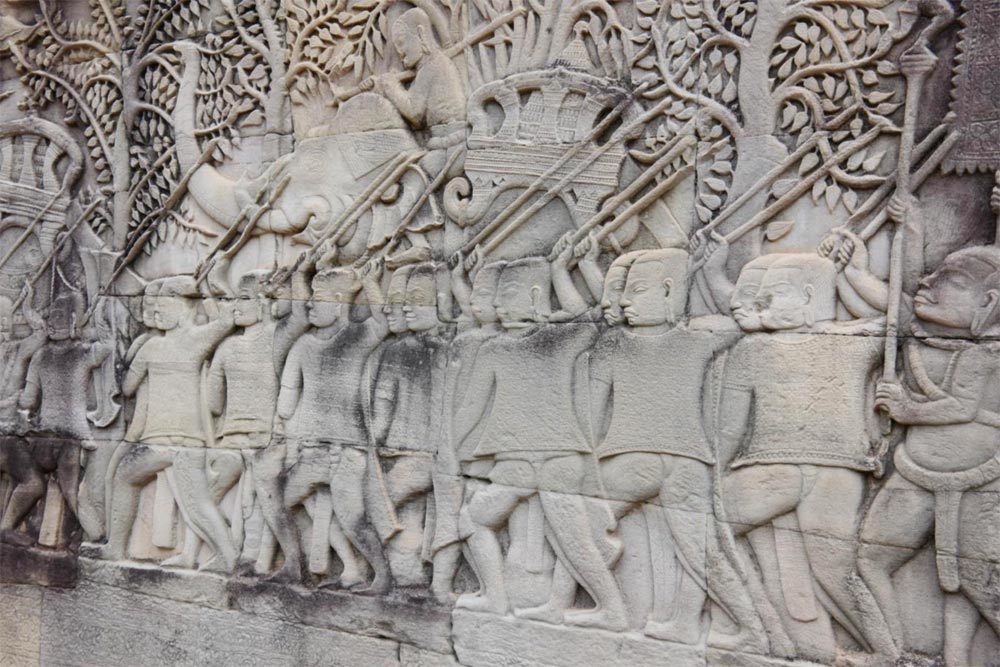
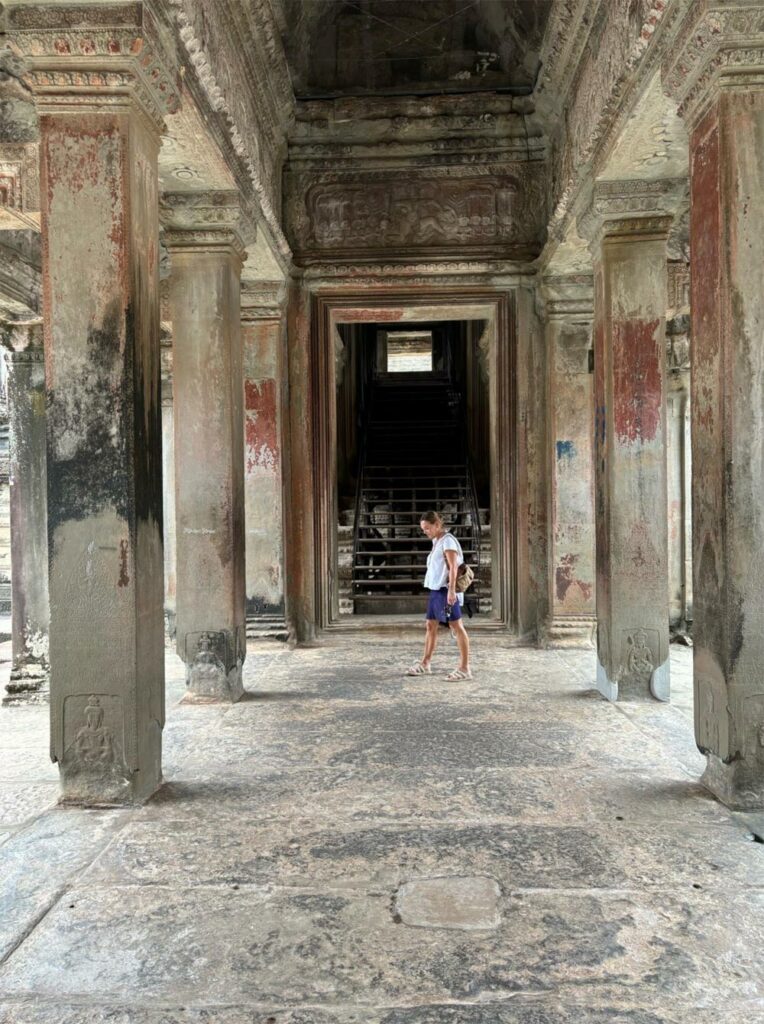
The temples are evidence of 300 years of prosperity, which ended in the 15th century with the conquest of the Thai King Ayuttahaya. They were abandoned and fell into a deep slumber for centuries before the French discovered them 150 years ago.
The Landmine Museum
A sad chapter of this country is certainly the terrible period of rule by the Khmer Rouge. Their leader Pol Pot wanted to establish a communist agrarian state here. Millions of Cambodians who did not fit in and were executed on the ‘Killing Fields’ fell victim to this plan. The Landmine Museum in Siem Reap, founded by Aki Raa, tells the story of the former Khmer Rouge child soldier who knew nothing but war until the country was liberated by the Vietnamese in 1989! Only then did he understand the devastation and disaster that the Khmer Rouge had inflicted on the people with their countless landmines. He became a hero, collected money, defused landmines, founded a children’s home for the wounded and built a museum. This also is Cambodia!
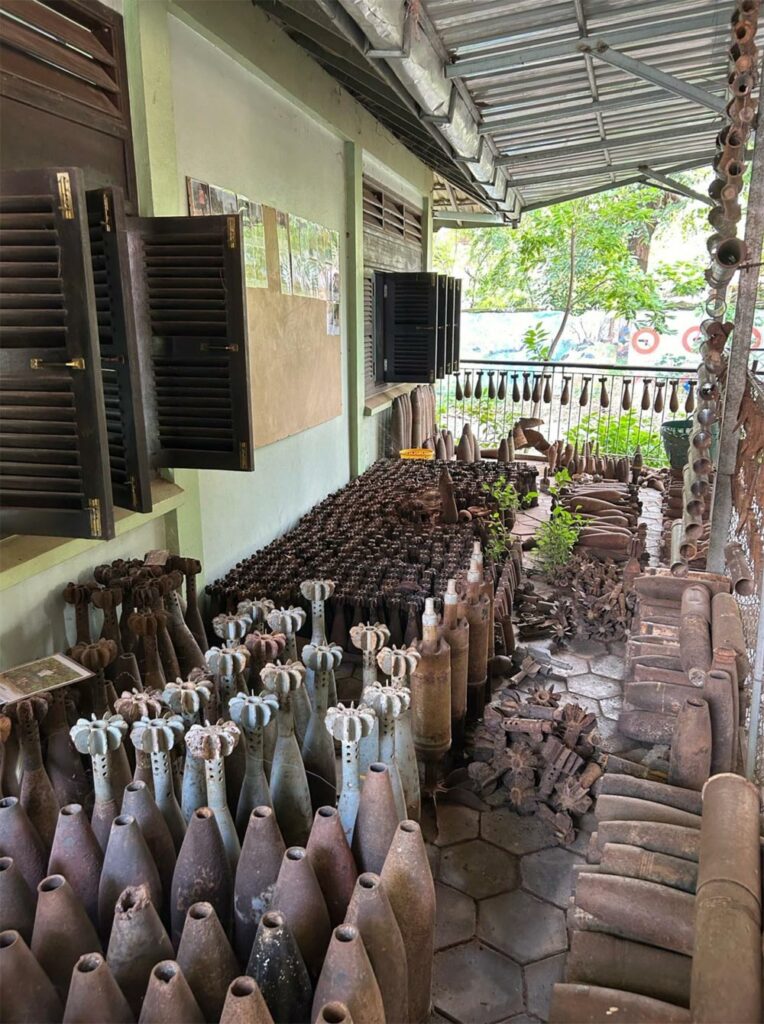
On the way to the coast, we drive over difficult roads again, past the ugly outskirts of the big city of Phnom Penh, where at five o’clock on the dot the streets are lined with thousands of women who the surrounding factories are spitting out. They are all heading home, on scooters, standing on lorries. This is also part of everyday life in booming Cambodia, which only finally managed to free itself from the Khmer Rouge in 1999 and literally fought its way up from the dust.
Today, the CPP, Cambodian Peoples‘ Party, whose posters are piled up every few metres along the main road, is ensuring that the country regains its prosperity. With questionable methods. Opposition members are imprisoned and their parties are not allowed to stand in elections. Social inequality grows with prosperity, power is passed on to the next generation so that a few families call the shots. On the 2022 Corruption Perceptions Index, the country ranks 150th out of 180. Germany supports the country with 63 million euros in development aid every year and one wonders what is being done for the people. According to the ministry of development the funds are channeled into medicine, social security, population dynamics and environmental protection. https://www.bmz.de/de/laender/kambodscha/wirtschaftliche-situation-16086

